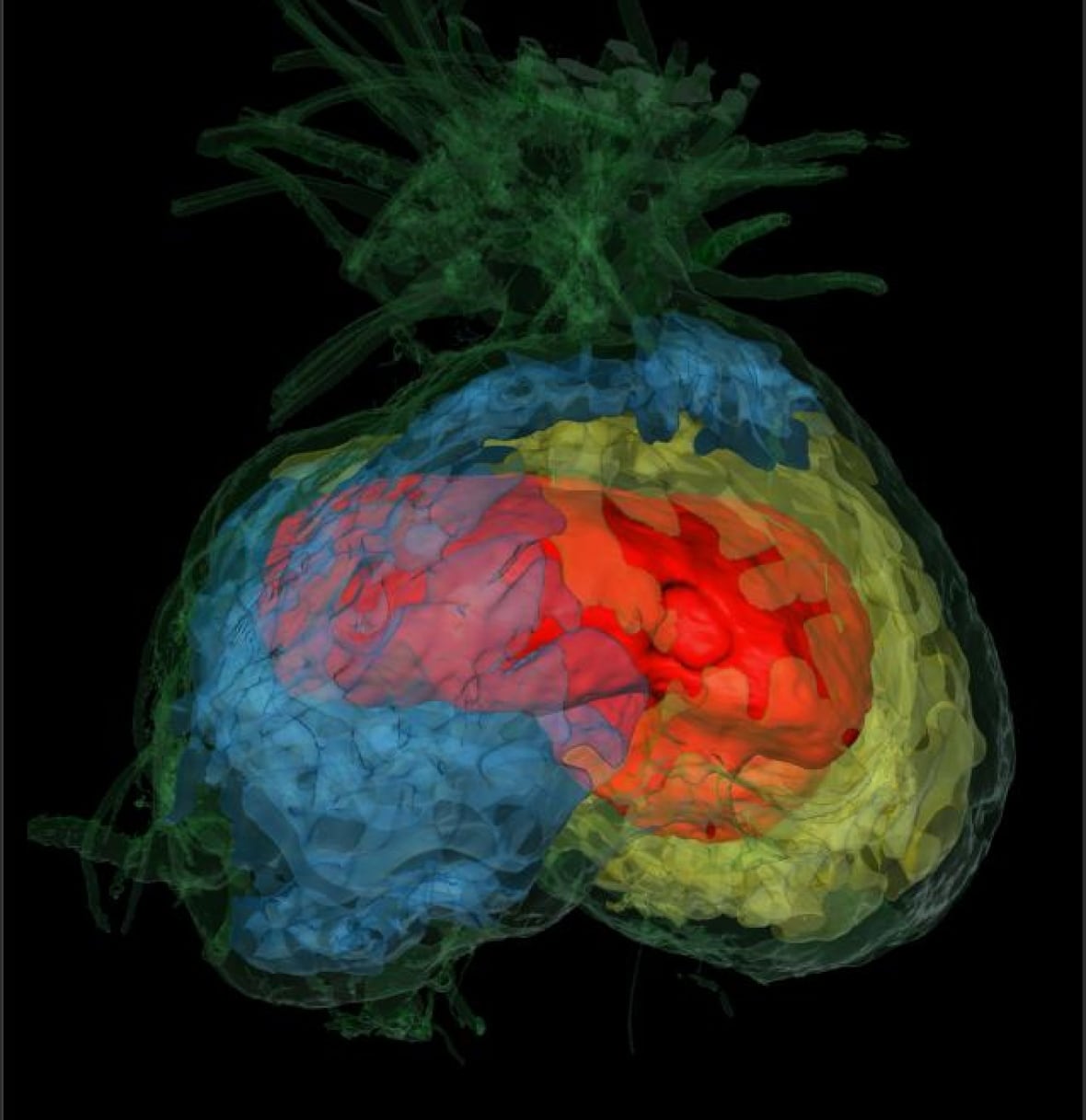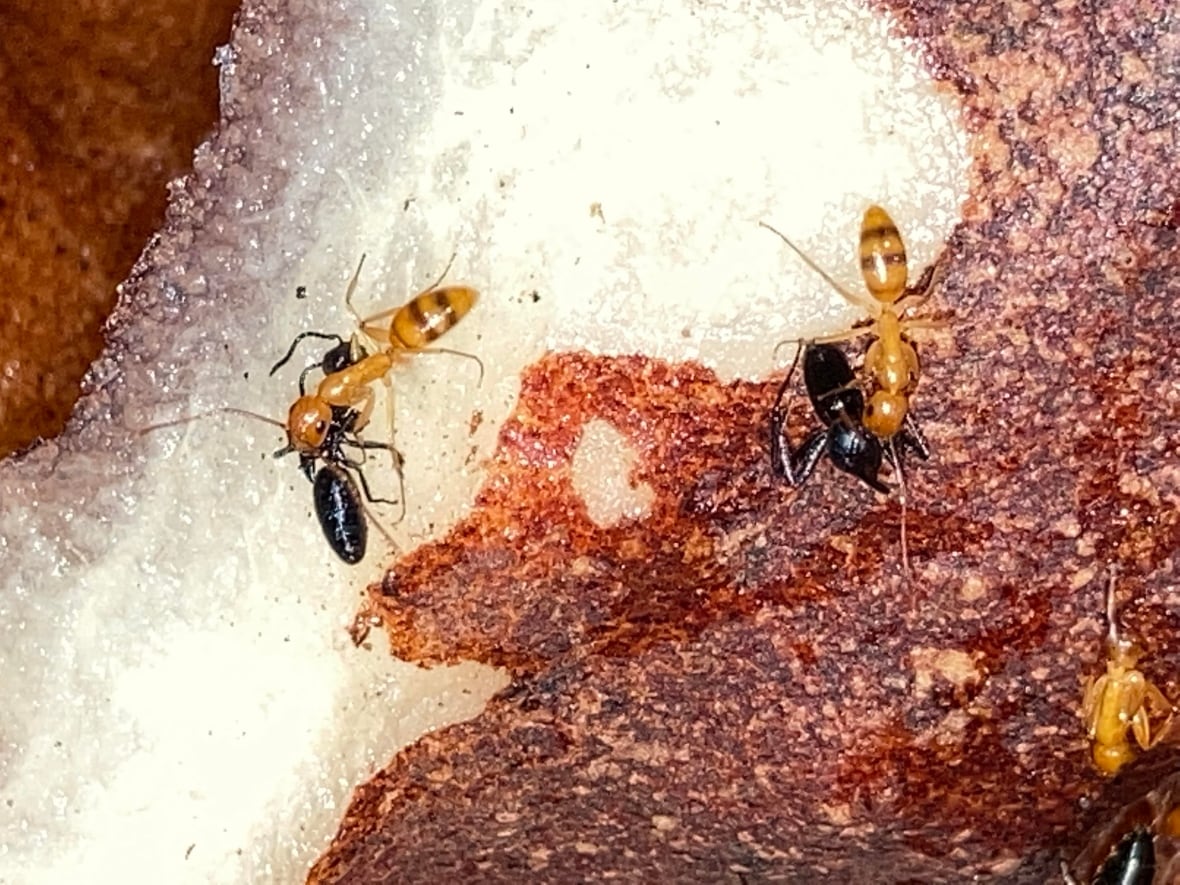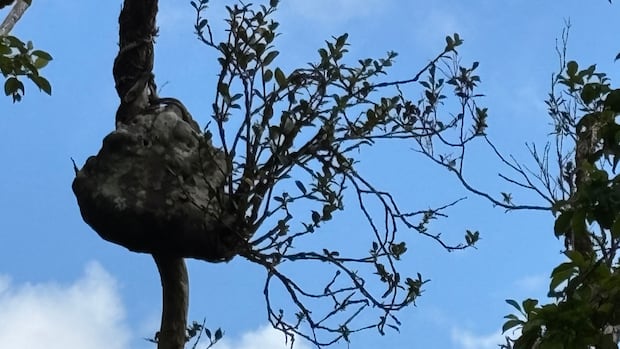As It HappensThis plant peacefully houses warring species of ants by giving them their own little apartments
When Guillaume Chomicki sliced into the bulbous part of a plant growing on the side of a tree in Fiji, he expected to find it filled with ants.
After all, it was Chomicki and his colleagues who first proved that Squamellaria plants have a symbiotic relationship with ants, providing shelter in exchange for nutrients.
What he didn’t expect, though, was to discover two colonies of ants from two different species inside the same basketball-ball sized tuber.
“It doesn’t really make sense,” Chomicki, an evolutionary biologist at the U.K.’s Durham University, told As It Happens host Nil Köksal. “Ants are known to be very aggressive and territorial.”
Chomicki is the lead author of a new study, published in Science, that shows how Squamellaria plants house warring species of ants by building them their own little walled-off compartments with separate entrances.
The researchers liken it to a landlord/tenant relationship.
Gotta keep ’em separated
Squamellaria plants are epiphytes, which means they don’t have roots that attach to the soil. Instead, they grow on top of other plants and trees.
They produce round, mostly hollow tubers that Chomicki says are like “huge potatoes the size of a soccer ball or even larger.”
In Fiji, they’re known locally as “testicles of the trees.”
“They are huge, quite hairy dangling things up the trees. So I think the name is quite self-explanatory,” Chomicki said.

Because these plants are not rooted, they rely on other sources for their nutrients. That’s where the ants come in.
The tubers make for excellent accommodations for ant colonies, giving them protection from the elements and predators. In turn, the ants fill the tubers with detritus and defecation, which provide sustenance for the plant.
But while Squamellaria love ants, and ants love Squamellaria, ants don’t usually like other groups of ants.
“In general, a species does not co-operate with multiple unrelated partners,” Chomicki said. “Because the same partners would be competing for the same resources, and that could lead to the collapse of the whole system.”
Squamellaria plants, it turns out, have a solution to this conundrum. Chomicki says 3D scans reveal the tubers contain a “network of galleries.”
“These galleries are not carved by the ants. They are made by the plant itself. It’s all plant genetics,” Chomicki said. “All the ants are in different compartments, and that’s exactly what makes the system stable.”
Breaking down barriers leads to carnage
Each compartment has its own entrance to outside, the study found, but they are completely walled off from each other.
When Chomicki and his colleagues broke down those walls to see what would happen, all hell broke loose.
“They have been living together for years, but the second that I cut these walls that separate them, a huge fight broke [out], and in half an hour, pretty much all the ants were dead,” he said.

Aaron Fairweather, an entomologist in Guelph, Ont., who wasn’t involved in the study, called it “super cool,” and says the findings illustrate the “incredible world of complexity in these micro-habitats.”
“I’ve studied a lot of ant/plant interactions,” they said. “Finding out about, you know, the kind of apartment-style situation that this plant has with a bunch of different ant species is just really fascinating.”
Fairweather wasn’t surprised to learn the ants in the Squamellaria plants fought to the death once they were made aware of each other’s existence.
There are an estimated 20 quadrillion ants on the planet, and Fairweather says they often wage war with each other.
“One of the interesting things about ants is they are so successful in the environment that they no longer really need to compete with environmental factors or other species per se,” Fairweather told CBC.
“But they have to compete with other ants, which are as successful as them.”
And when they fight, Fairweather says, it’s not pretty.
“They start grabbing legs and tearing off limbs and antennae go flying and heads are popping,” they said. “It’s brutal.”
All the more reason, then, for them to have some space to themselves inside their Squamellaria homes.
“Forming symbiosis with multiple … species of ants is something that that theory was always predicting is not possible. You know, the system cannot be stable. And here I’ve shown that this is actually possible,” Chomicki said.
“These compartments, these apartments, really are a very, very efficient way to maintain co-operation between different species of ants within this plant.”
